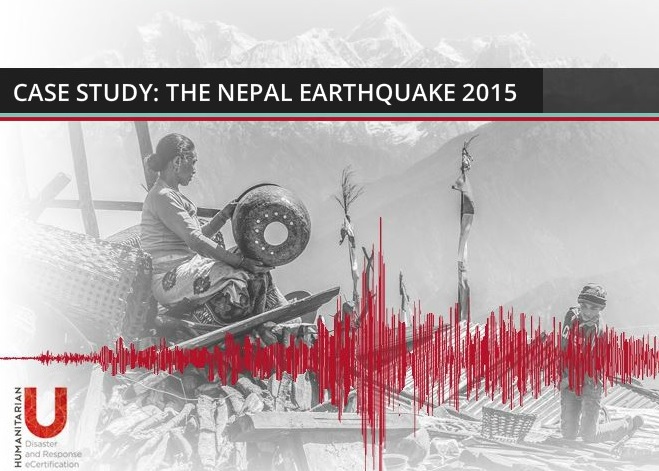You are here
On Shaky Ground: Disaster Preparedness and Response in Nepal

On Shaky Ground: Disaster Preparedness and Response in Nepal

Course Information
As one of the efforts in promoting learning of best practices in disaster response, the Hong Kong Jockey Club Disaster Preparedness and Response Institute partnered with the FXB Center for Health and Human Rights at Harvard University (Harvard FXB Centre) to develop case studies based on real situations of past disaster and situations with emerging disaster risks.
Our case studies are presented in various forms: study papers, interactive modules and videos
Apart from the case study papers and knowledge assessment put in the website, teaching materials for tertiary level or professional learning such as in medical or public health schools and training courses for disaster practitioners, NGOs, policy makers, etc, are available upon request. Please contact [email protected] for details.
On 25 April 2015, a 7.8M earthquake struck Nepal, affecting millions of people across the small country, destroying tens of thousands of homes, and displacing large swathes of the population in the earthquake affected districts. Yet the impact of the earthquake was not equal across the population. Many vulnerable groups across Nepal that did not receive aid in a timely fashion. This case focuses particularly on those vulnerable groups so that you will understand how Vulnerabilities, Capacity and Resilience influence Disaster Risk Reduction Programs.
The case is divided into 4 segments, sectors of the response – Water and Sanitation, Food Security, Health and Shelter. They are designed to be completed in a non-linear fashion, with each one providing further information on the humanitarian response in regards to that sector. Throughout each sector, there are questions designed to test your comprehension of the material that is provided; however, these are not graded.
The case document will help participants apply a human rights framework to a real world situation in order to understand how vulnerabilities to the same risks can differ vastly within what outsiders perceive of as a monolithic society. Ignoring these differences might have important consequences on immediate aid and long-term recovery.
The case first examines the complex social and economic inequities in Nepal prior to the earthquake. Throughout this section, participants will learn to identify various vulnerable groups in Nepali society: the lower castes excluded from power and benefits; the women marginalized to secondary roles in all aspects of work and home life; children suffering from malnutrition, poor access to education, and vulnerable to being trafficked into domestic labor or prostitution; and the people of the remote and hill regions who are highly dependent on the plains for livelihoods, food and goods, and have limited and unreliable road access to markets. These great disparities across ethnicities, castes, and gender result in significant variation in access to aid, recovery, and resilience.
The second section of the case outlines the aid response in some detail, focusing on health, food, shelter, and protection. This section illustrates what the response looked like on the ground, and addresses budgets, categories and amounts of aid, challenges in coordination, and limits in distribution.
In the third section, having discussed how the Nepali government and international partners responded to the earthquake, the instructor may then help students to think through a rights based approach to aid, whereby protection mechanisms and aid distribution strategies focus on the most vulnerable. Amnesty International’s “Earthquake Recovery Must Safeguard Rights” (2015) may serve as a supplemental reading to this section of the case. In conclusion, the 2015 Sendai Framework on Disaster Risk Reduction is suggested to be introduced, with the goal of incorporating the Framework’s priorities into Nepal’s recovery and reconstruction process.
Disclaimer: The views and opinions expressed in this case study are those of the authors and do not necessarily reflect the views of the Hong Kong Jockey Club Disaster Preparedness and Response Institute.



